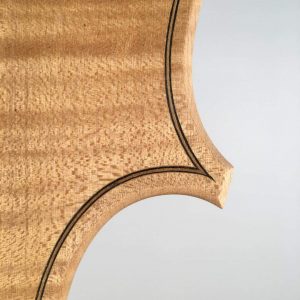The Making

When people think of violinmaking, they typically imagine a single craftsman working tirelessly at a bench. In some respects, this characterization of the craft is pretty accurate. Despite advances in technology, the vast majority of the instrument making process is still grounded in patient, meticulous work carried out with hand tools. No matter how many insightful books are printed on the craft, no matter how many excellent scientific practices are applied to lutherie, a fine stringed instrument at heart is still the product of the ideas, ability, and energy of a single luthier.
For me, the work at the bench is what drew me to this profession. When I am carving a scroll or inlaying purfling or refining an arch, time has a way of fading into the background, and I find myself completely immersed the work of the moment. While some makers find scroll carving rewarding, others love cutting fholes, others still find shaping the corners a favorite task, I myself enjoy the ever-changing variety of tasks in making. One moment you will be working with heavy gouges shaping an arching, only to find yourself moments later focusing on a few millimeters of a corner where the two strips of purfling meet at a miter. In order to switch from task to task like this, a violinmaker must always be guided by a clear idea of what shape, line, and standard he is trying to achieve.
I spend a great deal of time with each instrument over the course of its making. The average violin and viola from the time it is just a few billets of wood to the time it is ready for varnish will take three to four weeks. Varnish and setup takes another month. A cello can take months more. Even when the instrument is setup and playable it will spend another month in my studio in order to settle and have its setup further adjusted to optimize its tone.
While some makers turn over parts of the making process to assistants, I myeslf make every aspect of my new instruments. This keeps me very close to each instrument… its wood properties, its resonance, its feel. Paying close attention to every part of the making process and adhering to high standards for each and every step is in my opinion the real secret of a great new instrument.


In order to convey a sense of what the making of a new instrument entails, from start to finish, I have assembled a photo essay on the making of a cello. I hope this will convey the amount of time and attention to detail I lavish on each new instrument I make.
Click here to see the process of making a cello.

